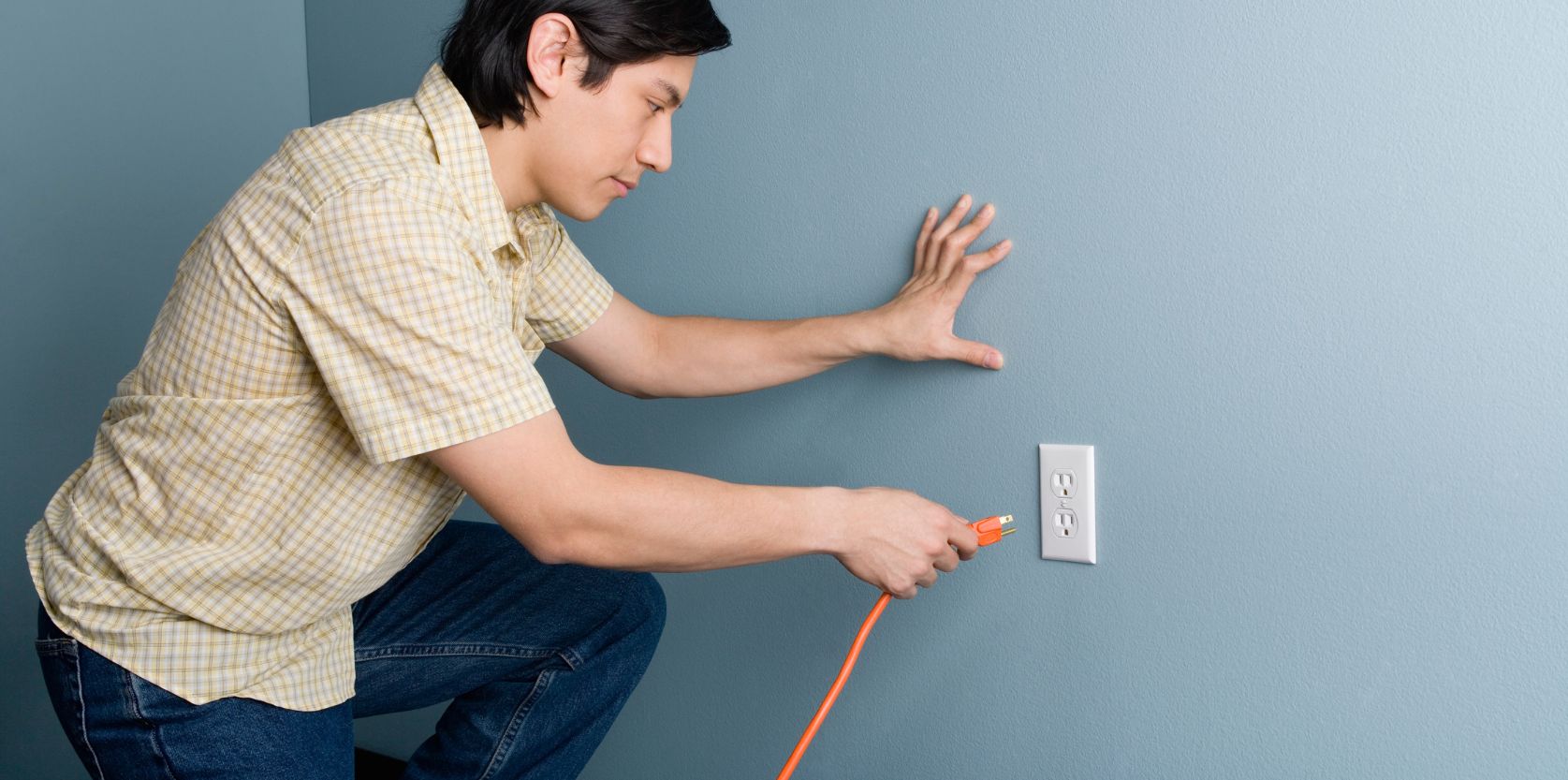
Make sure your family is safe from electrical dangers with this list of basic safety essentials.
Check outlets for loose-fitting plugs. Replace missing or broken wall plates so wiring and components are not exposed. If you have young children at home, install tamper-resistant outlets or cover unused outlets with plastic safety caps so that nothing but electrical plugs goes into outlets.
Never force plugs into outlets. Do not remove the grounding pin to make a three-prong plug fit a two-prong outlet. Avoid overloading outlets with adapters and too many appliance plugs.
Make sure cords aren’t frayed or cracked, placed under carpets or rugs, or located in high-traffic areas. Do not nail or staple them to walls, floors or other objects. These practices can lead to a fire.
Use extension cords only on a temporary basis—not as permanent household wiring. Make sure they have safety closures to protect children from shock and mouth burns. When not in use, carefully coil up cords and store them out of reach of children.
Check wattage to make sure that lightbulbs match the fixture requirements. Replace bulbs that have higher wattage ratings than recommended, which can be a fire hazard. Screw them in securely so they don’t overheat. It’s a good idea to turn the power off at the breaker when replacing lightbulbs to eliminate the risk of electric shock.
Make sure outlets in the kitchen, bathrooms, laundry room, garage, outdoors or any area with water are equipped with ground-fault circuit interrupters either at the site or at the breaker box. Test GFCIs monthly to ensure that they’re working properly.
Make sure fuses are properly sized for the circuit they’re protecting. If you don’t know the correct rating, have an electrician identify and label the correct size to be used. Always replace a fuse with the same size you’re removing.
If an appliance repeatedly blows a fuse, trips a circuit breaker or has given you an electrical shock, immediately unplug it and have it repaired or replaced. Look for cracks or damage in wiring and connectors. Use surge protectors to safeguard electronics. Properly dispose of any appliances that are not safe anymore.
Check periodically for loose wall receptacles, wires or loose lighting fixtures. Listen for popping or sizzling sounds behind walls. Immediately shut off then have a professional replace light switches that are hot to the touch and lights that spark or flicker. These could be signs of a serious electrical safety issue. Whenever working with electrical outlets or switches, turn the power off at the braker for your safety.
As youupgrade your home with more lighting, appliances and electronics, your home’s service capacity may become overburdened. If fuses blow or breakers trip frequently, have a professional determine and install the appropriate service requirements for your home.
Posted: 2/15/2024 12:56:28 PM
Author: